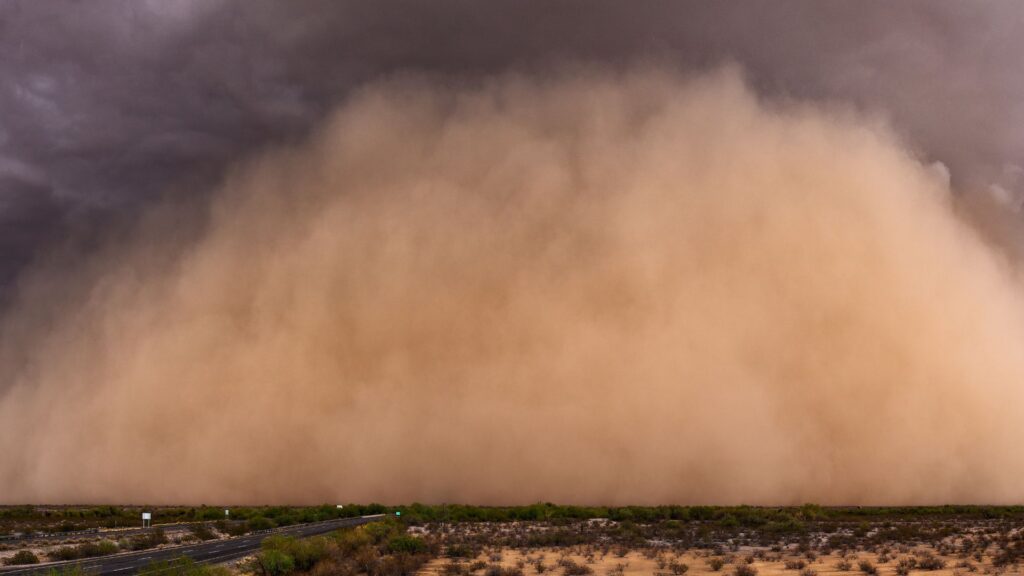
Most people are familiar with Egypt’s three iconic pyramids — now imagine over 300 of them reduced to fine particles and swept into the air. That’s roughly the amount of sand and dust lifted into the atmosphere each year by powerful storms, according to the World Meteorological Organization (WMO).
The WMO’s latest annual report reveals that although the total dust levels slightly declined in 2024, their effects on public health and economies are worsening. The agency estimates that more than 330 mln people across 150 countries are regularly affected by these storms, which are linked to respiratory illnesses, heart disease and economic disruptions.
A Growing Hazard Beyond Hazy Skies
«These storms are not just a nuisance that clouds the sky — they take a real toll on human wellbeing and cost economies millions,» said WMO Secretary-General Celeste Saulo.
While sand and dust movement is a natural phenomenon, the situation has been aggravated by soil degradation and poor water resource management.
Around 80% of airborne dust originates from regions such as North Africa and the Middle East, but these fine particles don’t stay local. They travel across continents and oceans.
«Storms that start in the Sahara can dim skies in Europe. Dust from Central Asia can reduce air quality in Chinese cities. The atmosphere doesn’t recognise borders,» explained WMO scientist Sara Basart at a press conference in Geneva.
Last year, dust clouds from Western Sahara reached the Canary Islands, while dry winds in Mongolia transported dust to Beijing and northern China.
From Local Phenomenon to Global Crisis
According to UN officials, what used to be viewed as isolated or seasonal events are now evolving into one of today’s most serious global environmental threats.
These storms can block sunlight, disturb both terrestrial and marine ecosystems, and pose life-threatening health risks.
«Dust storms are no longer rare events. They have become a chronic, expanding hazard that is still underestimated,» said Rola Dashti, who co-chairs the UN Coalition addressing the issue.
Between 2018 and 2022, an estimated 3.8 bn people were exposed to dusty air. In certain regions, dust was present for up to 87% of the time.
Airborne particles worsen respiratory and cardiovascular conditions and are linked to approximately seven mln premature deaths each year, especially among vulnerable populations.
The President of the UN General Assembly, Dennis Francis, described the figures as alarming. Economically, dust storms can slash crop production by as much as 20%, contributing to food insecurity and rising poverty.
In 2024 alone, countries in the Middle East and North Africa lost an estimated 2.5% of their combined GDP due to sand and dust storm damage.
Urgent Need for Joint Action
The WMO is calling for stronger international efforts to invest in early warning systems and environmental monitoring tools.
«No single country can tackle this alone. These storms cross borders and require coordinated global responses involving multiple sectors,» Dashti said.
The UN has designated the period from 2025 to 2034 as the Decade to Combat Sand and Dust Storms, which leaders hope will drive more cooperation and move efforts from discussion to implementation.
Kursiv earlier reported that on May 17, Tashkent and several other regions in Uzbekistan experienced dust storms and strong winds.












